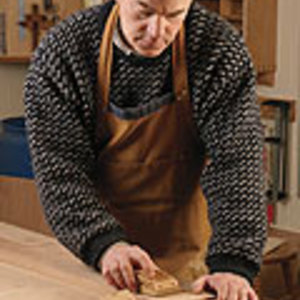All about Files and Rasps
Files and other shaping tools can offer more control than power tools while reducing the amount of time you’ll have to spend sanding.

Files and rasps are shaping tools that, with practice, can offer more control than power tools while reducing the amount of time you’ll have to spend sanding. Files won’t tear the surface of wood like a plane can, and they are capable of removing a lot of material quickly to bring a surface to a fairly smooth finish.
What Counts:
• Tooth pattern and coarseness of cut
• Length
• Shape
Files
Files produce a finer finish than rasps. They come in a variety of shapes, but the most useful to woodworkers is probably the half-round, which has one flat surface and one opposing curved surface. Single-cut files have one set of parallel teeth cut into the surface. Double-cut files have two crisscrossing sets and produce a smoother finish. The grades of coarseness for files is the same as it is for rasps: bastard cut, second cut and smooth cut.
Rasps
Rasps have individual teeth that are made by a punch, either by machine or by hand, in a process called “stitching.” Woodworking rasps are from 6 in. to 14 in. long and are flat, round or half-round. They come in several degrees of coarseness: wood rasps are the roughest, followed in order by cabinet rasps and patternmakers’ rasps. And within each of those three groups, there are different degrees of coarseness, from bastard cut (the roughest) to smooth cut (the smoothest). Teeth are spaced farther apart on long rasps and closer together on short ones so a short rasp will make a finer finish.
Rifflers
Rifflers are special kinds of rasps and files that are made for detailing. They have an S-shape and a narrow profile with rectangular, oval, triangular or pointed heads that can reach into small spaces. A good combination is a riffler with one smooth end and one coarse end.







Log in or create an account to post a comment.
Sign up Log in